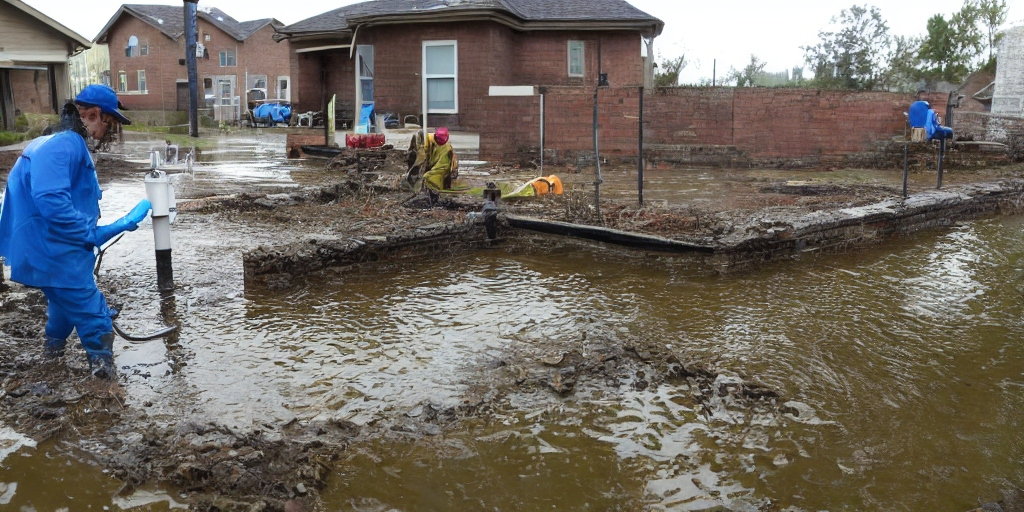Water and flood restoration is a crucial process for homeowners and property managers facing the aftermath of water-related disasters. Whether it’s a burst pipe, a natural flood, or a leaky roof, the damage caused by water can be extensive and devastating. In this comprehensive guide, we’ll delve into the water and flood restoration process, exploring why it’s necessary, how it’s done, and what steps you can take to restore your home to its pre-loss condition.
Understanding Water Damage
Before diving into the water and flood restoration process, it’s essential to understand the different categories and classes of water damage. Water damage is typically categorized into three levels:
- Clean Water Damage: This type of damage involves water from a clean and sanitary source, such as a broken water supply line or faucet. While clean water may not pose an immediate health risk, it can still cause significant damage to property if not addressed promptly.
- Greywater Damage: Greywater is slightly contaminated water that may contain chemicals, microorganisms, or other impurities. This type of damage can result from sources such as washing machines, dishwashers, or sump pump failures.
- Blackwater Damage: Blackwater is highly contaminated water that contains harmful bacteria, sewage, and other pathogens. This type of damage is the most severe and can result from sewage backups, flooding from rivers or streams, or storm surges.
Also Read: Understanding the Vital Role of a Water Mitigation Company in Restoration Efforts
The Water and Flood Restoration Process
1. Assessment and Inspection
The water and flood restoration process typically begins with a thorough assessment and inspection of the affected area. Trained professionals will identify the extent of the damage, assess the category and class of water damage, and develop a restoration plan tailored to your specific needs.
2. Water Extraction
Once the assessment is complete, the next step is to remove standing water from the property. Powerful pumps and extraction equipment are used to extract water quickly and efficiently, minimizing further damage to the structure and contents.
3. Drying and Dehumidification
After water extraction, the drying and dehumidification process begins. Industrial-grade dehumidifiers and air movers are strategically placed to remove excess moisture from the air and surfaces, preventing mold growth and secondary damage.
4. Cleaning and Sanitizing
Cleaning and sanitizing the affected area is essential to ensure a safe and healthy environment. Specialized cleaning agents and antimicrobial treatments are used to eliminate bacteria, mold, and odors, restoring the property to a clean and habitable condition.
5. Restoration and Repairs
The final step in the water and flood restoration process is restoration and repairs. This may involve repairing damaged walls, floors, and ceilings, replacing insulation and drywall, and restoring or replacing damaged belongings and furnishings.
Why Choose Professional Restoration Services?

While some homeowners may attempt to handle water and flood restoration on their own, it’s highly recommended to enlist the services of professional restoration experts. Here are several reasons why:
- Expertise and Experience: Professional restoration technicians have the training, experience, and expertise to handle water damage restoration safely and effectively.
- Advanced Equipment: Restoration companies use state-of-the-art equipment and techniques to extract water, dry out structures, and restore properties quickly and efficiently.
- Thorough Assessment: Professionals conduct thorough assessments to identify hidden damage and develop comprehensive restoration plans tailored to your specific needs.
- Mold Prevention: Proper drying and dehumidification are essential for preventing mold growth, which can pose serious health risks and further damage to your property.
Also Read: Wet Carpet Restoration: How to Save Your Carpets After Water Damage
Conclusion
In conclusion, water and flood restoration is a complex process that requires prompt action and professional expertise. By understanding the different categories and classes of water damage and following the proper restoration steps, you can minimize damage to your property and restore your home to its pre-loss condition. If you’re facing water damage, don’t hesitate to contact a reputable water and flood restoration company for assistance.










